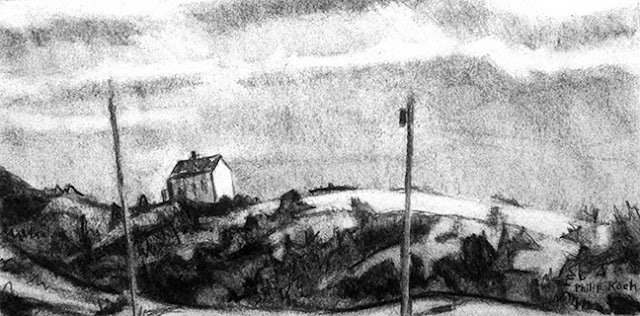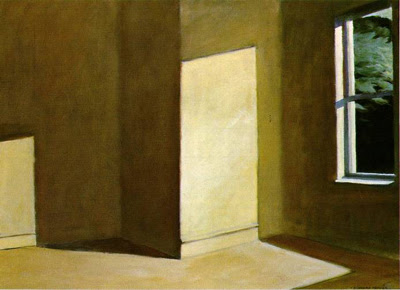Tiny Big Spaces
Philip Koch, Passage Color Harmonies I & II, pastel on
artist's sandpaper, each 5 1/2 x 8 1/4", 2008
I'll frame these two panels together as a diptych.
Sailboats. When I was a kid my dad never once played catch with me. Instead he bought a small sailboat and taught me to sail. I was allowed at an astonishingly early age to take the boat out by myself on the unprotected waters of Lake Ontario. Simultaneously proud and more than a little intimidated to be the "captain of my own ship" at such a tender age, the image of a lone small sailboat summons up in me a host of emotion- adventurous excitement tempered with background notes of anxiety.
For many years I was primarily a plein air oil painter. But my landscapes increasingly have come to represent more a state of mind than an actual place. As part of this evolution, in the last decade most of my larger pieces are done back in the studio from drawings.
To do this with real authority an artist has to explore this imagined location with lots of small experimental drawings. I often will begin on an absolutely tiny scale in my sketchbooks with ball point pen, creating thumbnail compositions that might be 2 x 3" or even smaller.
I generally keep these hidden in my sketchbooks, which are completely private (they are stored in a special brick-lined vault in my basement and guarded 24 hours a day by a half-starved Doberman). Knowing no one but me will see these earliest experiments allows me to be open to almost anything that suggests itself. It is my place to try out the things I don't yet fully understand. If I stumble, and I do often, there's no audience for it. The best of these little drawings are re-examined on a larger scale in vine charcoal, fleshing out the idea by adding light and gradations. Finally I'll jump into color with soft pastel chalks drawn on Wallis brand artist's sandpaper, an elegantly sweet surface to work upon.
Above are two preparatory drawings for my large oil painting Passage. I love working at this very modest scale and doing multiple variations on the same image as it makes me absolutely fearless. Degas was reputed to have said "Do the same drawing ten times. Do it a hundred times."
You're not trying to do exact copies of the same image- instead keeping some slack in the reins let's only partly intentional variations creep into the second or third version. Then sit back and let all the little studies compete to show you who's best. Working small frees up your mind to do the large paintings..




